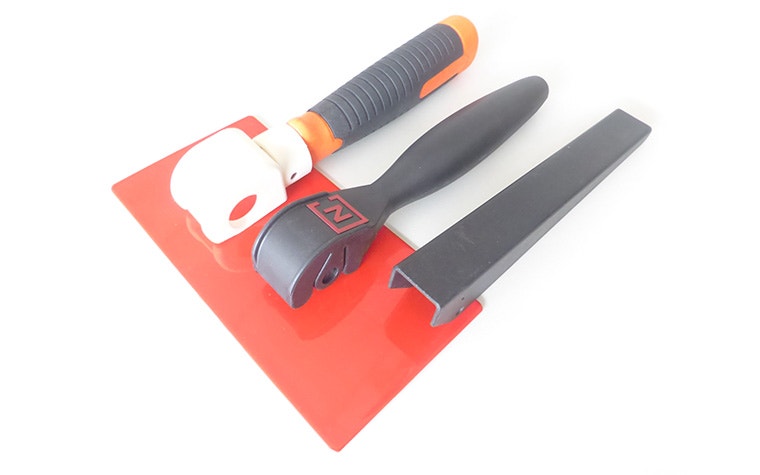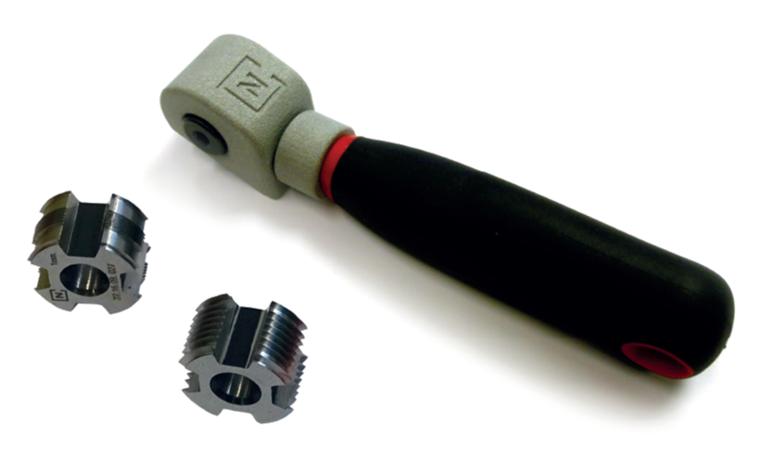CASE STUDY
The Cutting Edge: Why NEURTEK Chose AM to Redesign Its Ergonomic Scratch Tool

Integrating additive manufacturing (AM) is all about finding the right applications — and NEURTEK’s NK2000 scratch testing tool is the perfect example. Discover how they used AM to integrate functionality, reduce weight, and improve the tool’s ergonomics.
The challenge
Redesign a strong, lightweight, ergonomic cross-cut testing tool
Since 1979, NEURTEK has specialized in providing equipment and technical solutions for quality control and R&D to a wide range of industries, including automotive, aerospace, research centers, and beyond. When Haritz Elexpuru, General Manager of NEURTEK, first took control of the company, he had a clear goal: to bring their range of high-quality products to new markets.
“In the past, we only sold in Spain. My focus was to sell all around the world,” he tells us. “One of the ideas that came to me was to produce not only with traditional techniques but also with 3D printing.”
One of the first products to benefit from this new mindset is NEURTEK’s NK2000 — a handheld device used to cross-cut test the adhesion of coatings. Given the nature of the product, Haritz and NEURTEK's R&D team knew that this redesign needed to deliver on three key characteristics: ergonomics, durability, and, especially, built-in movement for the head.


Importantly, however, the design needed to work as more than a one-off prototype. The tool may be somewhat niche, but the goal was always to produce it in small series — a goal that comes with its own challenges.
"When working with 3D printing, you have to consider three things. One is what is possible when you're designing a prototype. Another is what is possible when you're designing for certified manufacturing. The other is what the customer needs," explains Haritz. "If you want a one-off product, you can play more freely. If you want to work with series manufacturing, you need to be more accurate and have more tolerances from a technical point of view."
"For this project, that gave us three constraints," he continues. "One, the functionality we wanted. Secondly, certified manufacturing — we needed a partner that understands certified manufacturing and the extra constraints that brings. And thirdly, ensuring our needs could be met consistently in series production."
With unmatched design freedom and no minimum order quantities, additive manufacturing — and Materialise's certified manufacturing services — was the obvious solution.
The solution
Series production using SLS and PA-AF
“Given what our R&D team knew about additive manufacturing, we thought about incorporating functions that could not be done through a standard process like injection molding,” says Haritz.
In this particular case, that function was movement. By allowing the head to oscillate, the tool would remain steady regardless of hand movement and work on flat and curved surfaces. This, alongside the weight reduction that often comes from choosing 3D-printed parts, would make it incredibly easy to use — a key consideration during the design process. This is where additive manufacturing comes into its own — integrating that moving head into a single part with no need for assembly.


To make that a reality, Haritz and his team worked with engineers from Materialise to create a series of prototypes. Some of the essentials, namely the location and diameters of the blades and a bolt to adjust them, were simple enough to get right the first time. Other aspects were more challenging.
“One of the big problems we had during this process was keeping this movement,” Haritz recalls. “If you make it (the head) too tight, it gets attached. Too loose, and it breaks. The second challenge was the orientation — you always need to know which orientation is right, so the part doesn’t break when you apply force.”
Step 1: Choosing the right material
Solving the latter challenge began with Haritz’s strong knowledge of AM. He and his team were already aware of the technology and material they wished to use when they first approached Materialise — a combination of selective laser sintering (SLS) and aluminum-filled polyamide (PA-AF).
“We knew that we could not do this in stereolithography. It’s not something you want to do in vacuum casting, and the anisotropy would be even higher in FDM,” explains Haritz. “Of all the technologies, the one with the lowest anisotropy and best mechanical properties is SLS.
“The main reason we wanted to use PA-AF is that it’s harder, with a higher tensile strength than polyamide,” he continues. “Another thing is the appearance — we don’t need to paint it. If we made it white, it would get dirty very quickly when used to scratch paint.”


Step 2: Preparing for serial production
Following the completion of the prototyping phase, the next challenge was to prepare the parts for serial production.
“A lot of service bureaus can do prototyping but not serial production. The biggest advantage Materialise has is that you really know how the machines work, and you are able to keep up production that has the same consistency, the same standard, as the prototypes,” says Haritz.
“We sell these products in the hundreds. An advantage of working with Materialise is the production flexibility: you have the biggest factory production of SLS in Europe, and there’s always a machine available.”
The result
The only scratch tool to incorporate 3D printing, now sold internationally
The final design of the NK2000 — to date — is now sold in countries around the world and is the first tool of its kind to use 3D printing. Designed for AM and produced through serial manufacturing, it delivers on NEURTEK's three key requirements: ergonomics, durability, and built-in movement. Choosing AM is certainly a decision that has paid off for Haritz and his team.
“Using additive manufacturing allowed us to create a product that is unique, with a function that would otherwise not be possible. It made it feasible cost-wise because you have to think it would be more expensive with machining. And I can work with smaller batches because there are no minimum order quantities.”
Importantly for NEURTEK, Materialise’s certified manufacturing process ensures they can consistently deliver the quality that their customers expect.
“I have been ordering this for six years, and it’s sold all over the world. It wouldn't be possible if I knew that one day a batch would go wrong, and I would get complaints from a customer in Australia, one in India, and another in Italy,” explains Haritz. “The big advantage is that you can really keep good production tolerances, both visually and in physical properties. That’s the difference between a small service bureau and Materialise.”
Maintaining a close relationship throughout the process has been key to this success for both parties, from initial design to troubleshooting during production. Beyond being something that both Neurtek and Materialise value, to Haritz, it's essential for anyone considering designing for AM.
"It has to be a conversation, and it's very important that the customer is involved. You have a fantastic engineering team, young people with a lot of ideas. It's necessary because, during the process, we need to redesign the part and fully take advantage of the technology," he tells us. "Without this conversation, you'll never get the full benefits of what additive manufacturing or Materialise has to offer."
Share on:
This case study in a few words
- Quality control
- R&D
- SLS
- Design for Additive Manufacturing
- Built-in functionality
- No minimum order quantities
- Price
- Ergonomics and durability
